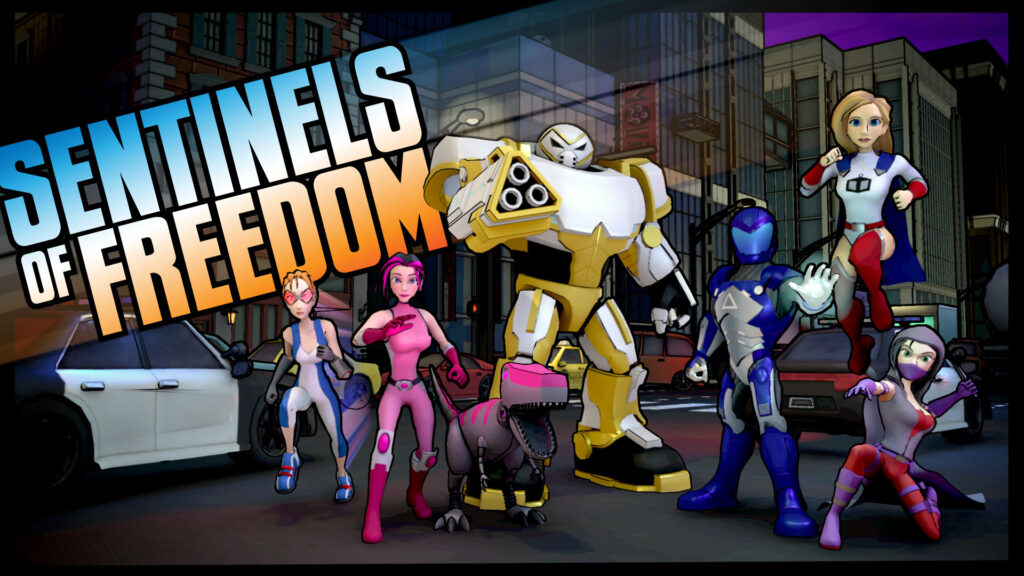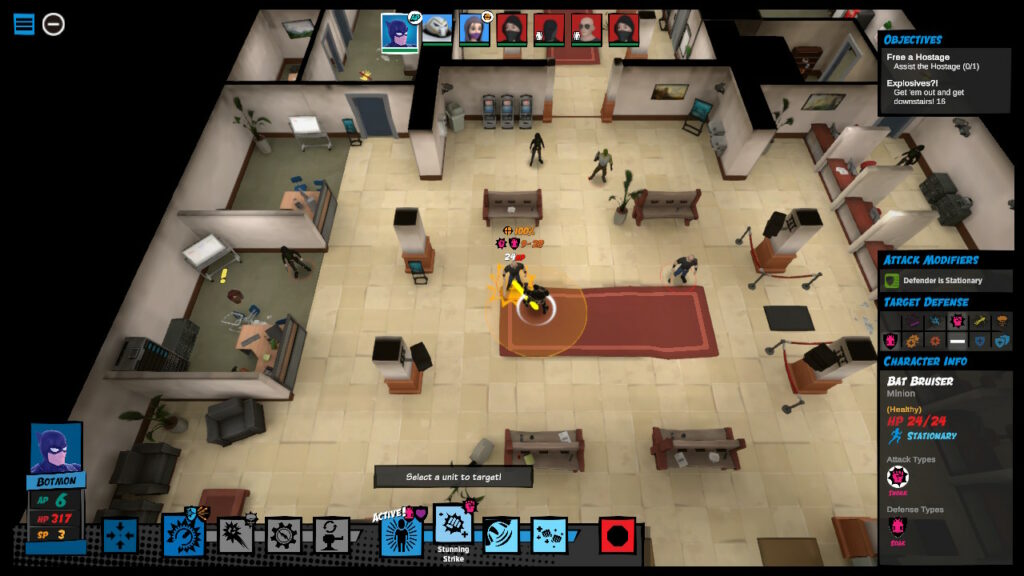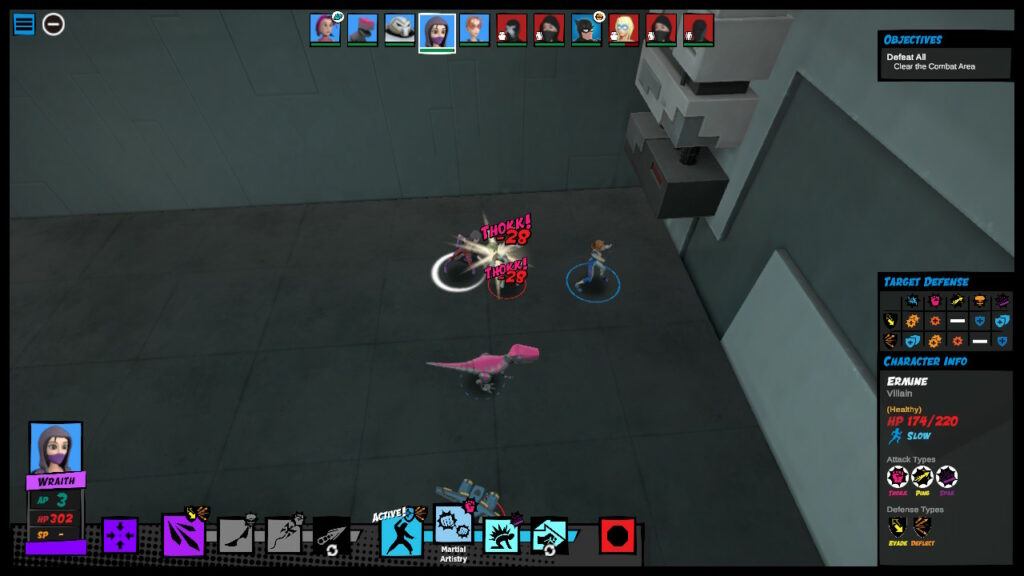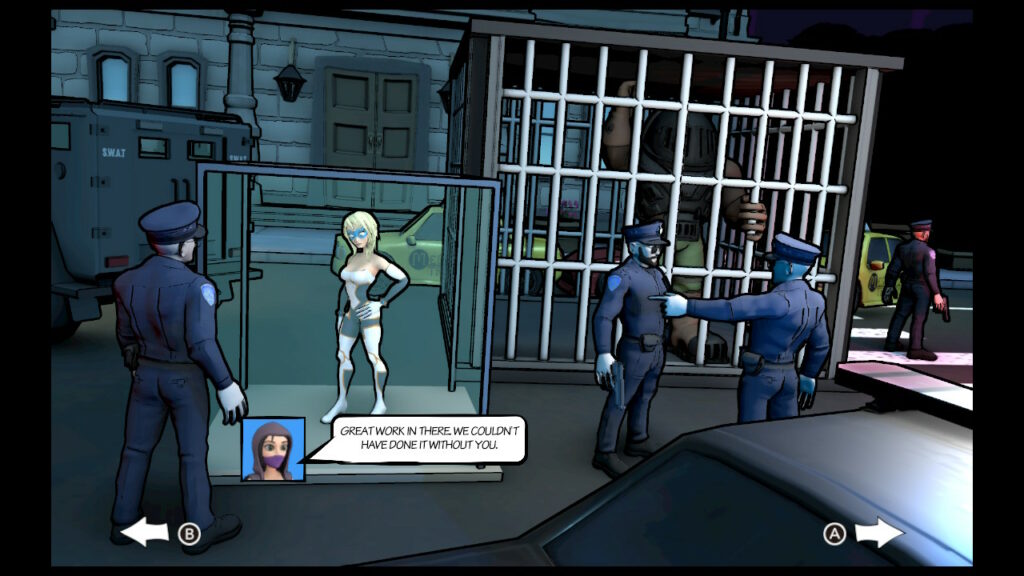
Developer: Underbite Games
Publisher: Underbite Games
Platform: Switch, PS4, Xbox One, PC
Tested on: Switch
Sentinels of Freedom – Review
To outsiders like us, Sentinels of Freedom is an interesting title, as it fits into a much larger whole. The game is an attempt to bring the characters of the Sentinels multiverse to the attention of the mainstream audience. Unfamiliar with the Sentinels multiverse? You’re not the only one. Read on and find out what the multiverse is about, and more importantly, whether Sentinels of Freedom is worth your time.
Story
Before we look at the specific story of Sentinels of Freedom, it’s important that we elaborate on how the game is only one piece of a much larger whole. Sentinels of Freedom is a video game that is part of the Sentinels multiverse, which is the setting of a series of games including a card game and a pen and paper RPG. There’s also a podcast, The Letters Page, which covers the Sentinels multiverse. All of the Sentinels media features characters from Sentinel Comics, and all of the games set in this multiverse occasionally refer to specific comic issues and character quotes. “Why is this important to this specific game?”, I hear you ask? Well, because Sentinel Comics is a fictional publisher that doesn’t actually exist: although the characters, who are clearly heavily inspired by DC and Marvel, have extensive fictional histories in-universe, many of them are appearing in these games for the first time. These elaborate backstories often detail character histories that are crucial in understanding how these characters relate to one another. Fortunately, these backstories can be found and read in the game as well.
The titular Sentinels of Freedom are an in-game organization in the vein of the Avengers or the Justice League. The main campaign tells a story about how the Sentinels notice increased criminal activity. After the tutorial, which introduces us to Raven-expy Wraith and her friends, you get to create your own character, who takes on the lead role in the story campaign. The campaign itself, titled Cold War – Part 1, is standard superhero fare -we won’t spoil the story itself, but chances are you already have a decent idea of how it plays out. It does a good job of getting you to relate to and care about these characters, and you’ll unlock more heroes for your team as you progress through the game.
Graphics
Sentinels of Freedom’s graphics leave a lot to be desired. Graphically, the game looks like it came straight from the PS2 era with awkward animations and very basic character models. Cutscenes are rendered in a comic book style, which was a clever choice, but these comic book snippets make use of the janky in-game models, resulting in stiff and non-dynamic visuals. During missions, screens are cluttered with unnecessary information and text is displayed so tiny that it’s almost impossible to read without straining your eyes. Outside of missions, on the other hand, the interface is laughingly barebones.
Sound
There’s limited voice acting during missions, with decent performances, although hearing the same snippets over and over again can get a bit tiresome. The game’s music is very basic but it suits the atmosphere well. Although there’s very little variety to be found here, what’s present is low key and never gets repetitive, although we would’ve appreciated a few more tracks just to spice things up.
Gameplay
In Sentinels of Freedom, your task is to successfully guide a team of superheroes through a campaign of turn-based strategic missions. Each mission has its own objectives. Some involve taking down dastardly supervillains whereas others have you defend chokepoints and prevent robbers from feeling a crime scene. At the start of each mission, you’ll pick and choose from a selection of team members, each with its own strengths and weaknesses. The key to victory is in securing the right heroes for the job.
On the battlefield, heroes will use action points, or AP, in order to perform heroic deeds, whether it’s moving, powering up allies, summoning creatures or simply fighting. Heroes can continue to perform actions as long as they have AP remaining. Once their AP runs out, their turn is over until the next round begins. Each hero has its own move-set, which can be customized as well as you progress through the game. Heroes have access to two stances, ranged and close combat. The stance a hero is in decides which of their moves they have access to. They can change their stance during their activation but this will cost AP. At the end of an activation, a hero can change their stance for free.
It’s a fantastic system in theory, but Sentinels of Freedom’s execution leaves a lot to be desired. Controlling heroes feels awkward and sluggish, especially when selecting or deselecting which actions you want to take. The game also tries to cram way too much information on the screen, resulting in text being displayed so tiny that it’s barely legible. Movement feels slow, especially when there are lots of enemies on-screen and you have to wait for each enemy to activate and perform their action. We’ve also encountered an issue during an early mission where we had cleared the entire map of enemies and the game tasked us with doing just that. We were able to complete the mission but it involved each of our heroes being activated one at a time for several turns without them doing anything meaningful.
Apart from the things already mentioned, Sentinels of Freedom suffers from camera issues. The camera will often move away from the field of battle, resulting in a black screen when the game cuts to enemies entering the fray. You can control the camera yourself, of course, but with the clutter and the different rooms, things get a bit complex. As there’s no option to see a map during a mission, you’ll often find yourself trying to reorientate yourself when switching between characters. It’s also nigh impossible to differentiate between NPC allies such as police officers or hostages and NPC enemies such as burglars, as the maps are often too dark to see the details on the character models. This means you’ll end up moving heroes towards the wrong NPC character quite often, resulting in wasted time and AP.
All of the issues we’ve encountered can be summed up in that Sentinels of Freedom feels very much like a rushed and unfinished product. We really wanted to love the game as the concept has a lot of potential, but as it stands, Sentinels of Freedom feels like an incomplete build. We realize that this is a Kickstarter-funded indie title, which was made on a barebones budget, which explains some of the choices made here, but it shouldn’t be an excuse to offer gamers a shoddy product.
Conclusion
Sentinels of Freedom could have been so much more than the game that is presented here. The characters are well-written, even though the main campaign is cliché, and there are some elements of fun in the character customization. It’s a shame that the overall package is such a letdown. If some of the main issues were to be fixed in a future update, there might still be hope for the video game future of the Sentinels Multiverse. As it stands, however, Sentinels of Freedom is a major disappointment.
Sentinels of Freedom - Review,









No Comments